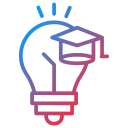Innovative Open Source Tools for Programming Education
Discover how innovative open source tools are transforming programming education worldwide. Open source platforms have democratized access to interactive learning, fostered collaboration among students and educators, and enabled rapid experimentation with cutting-edge technologies. By leveraging these tools, learners gain hands-on coding experience, while educators can tailor curriculum and challenges to suit a diversity of needs. Learn more about the leading solutions driving engagement and skill development in programming classrooms and beyond.

Real-Time Code Sharing
Real-time code sharing features let users work together synchronously on the same codebase, seeing each other’s changes instantly. This mirrors the experience of pair programming in a physical classroom but removes the limitation of location. Not only does this open up international collaboration, but it also enhances the learning experience for remote students. Teachers can observe and interact with many student pairs simultaneously, giving targeted feedback on writing style, logic, and debugging techniques. The transparency inherent in these solutions brings accountability, boosts communication skills, and helps students learn from each other’s mistakes in a supportive environment.
Integrated Communication Tools
Many open source collaborative coding platforms come equipped with built-in chat, audio, or even video conferencing features. These communication tools ensure that learners can ask questions, discuss solutions, and clarify doubts without ever leaving the programming environment. This integration removes friction commonly experienced when switching between software, creating a seamless experience for discussion and brainstorming. For educators, it means fostering classroom engagement and team dynamics even when students are physically dispersed, building soft skills alongside technical growth.
Visual Programming Environments
Block-Based Coding Interfaces
Block-based coding interfaces allow users to create programs by snapping together visual blocks that represent different programming constructs. Open source options in this arena are widely adopted in primary and secondary education, introducing algorithmic thinking without the risk of syntax errors that often frustrate new coders. The clarity and interactivity of visual programming invite experimentation, and learners gain confidence before tackling more abstract, text-based languages. As students progress, these platforms often provide seamless transitions to advanced coding, promoting long-term engagement and growth.
Interactive Simulation Tools
Visual programming tools often integrate simulation capabilities, letting learners see the immediate effects of their programs in action. For example, a student may build a block-based script to control a robot or animate a game character, watching the results update in real time. This feedback loop transforms abstract programming logic into tangible outcomes, making learning more concrete and memorable. By grounding new concepts in practical experiments, interactive simulations boost retention and encourage a playful approach to complex problem-solving.
Accessibility and Customization
One of the distinctive strengths of open source visual programming tools is their adaptability for different learner populations. Educators can modify or extend core interfaces to meet accessibility standards, introduce custom learning modules, or localize content for various languages and cultures. This flexibility ensures that students with diverse abilities, including those with special needs, can participate equally in programming education. The collaborative nature of open source development drives rapid iteration and ensures these tools reflect the needs of an evolving learner base.
Previous
Next
